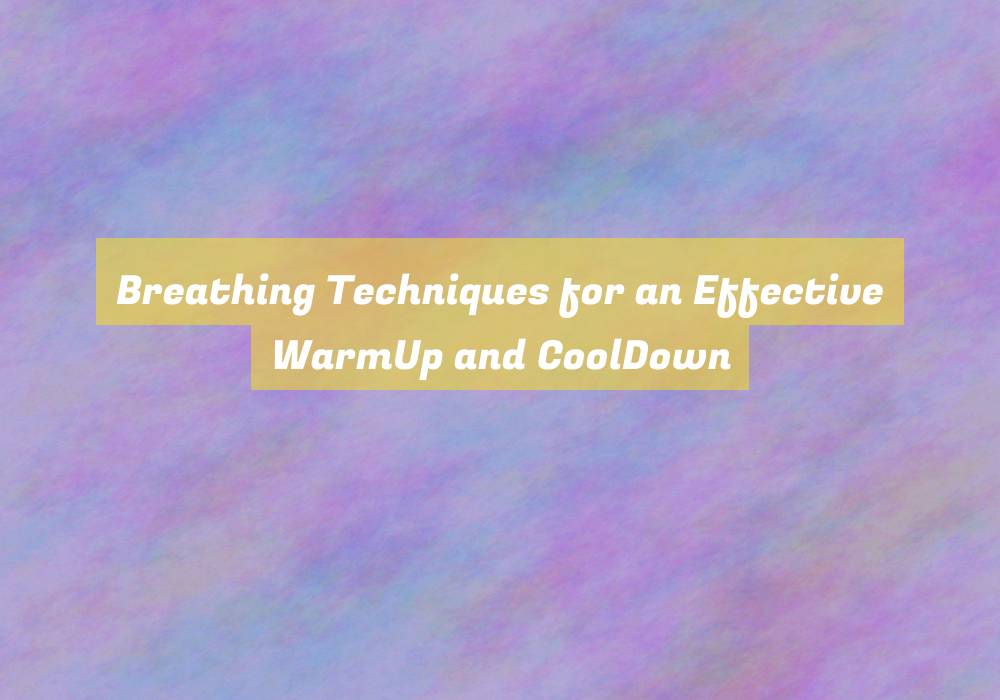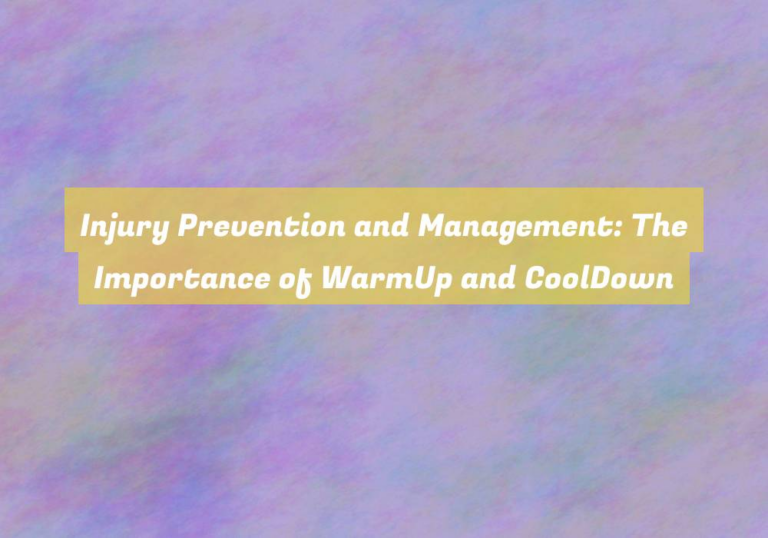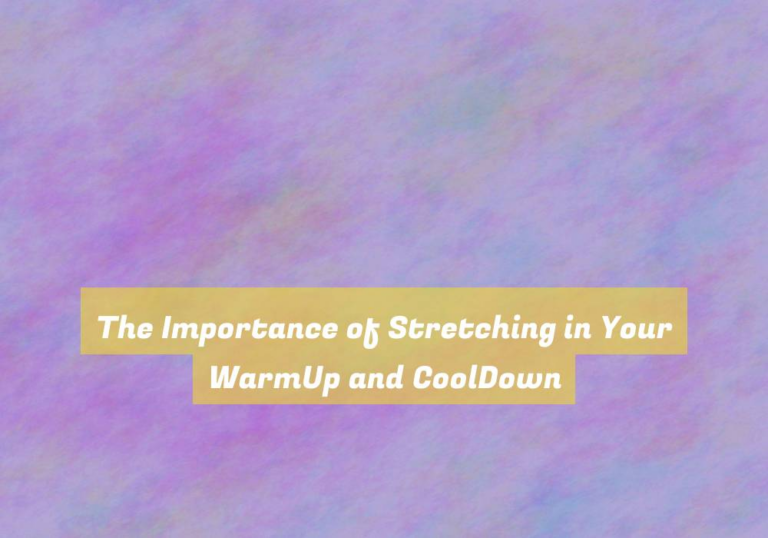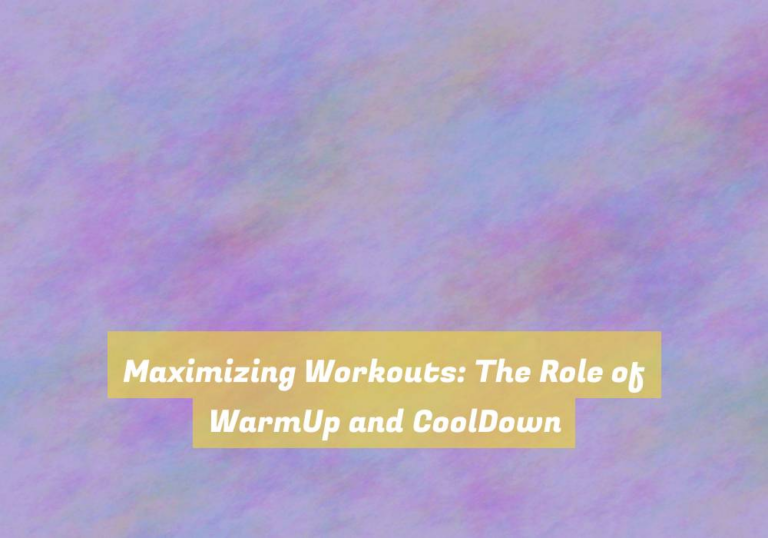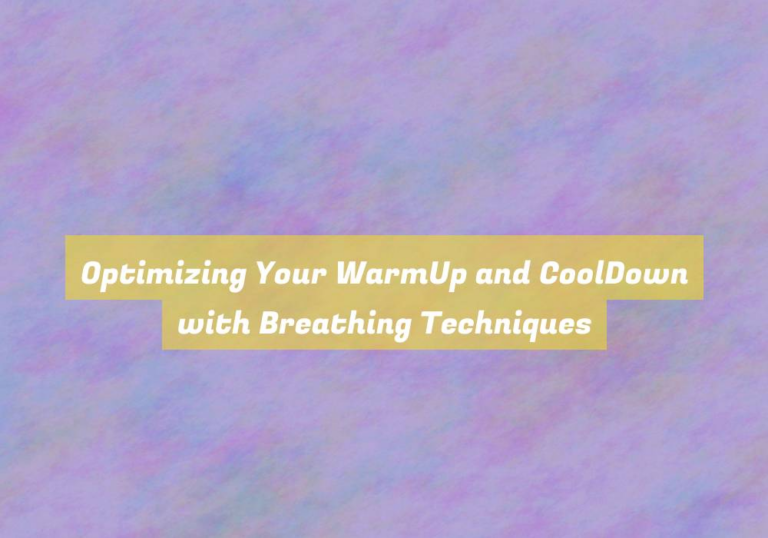Breathing Techniques for an Effective WarmUp and CoolDown
When it comes to warming up and cooling down, the key is to remember that your breath is more than just air filling your lungs G?? itG??s the fuel that powers your movements and aids in recovery.
You may be surprised to learn just how much of a difference proper breathing techniques can make in your workout routine. Whether youG??re a seasoned athlete or just starting out on your fitness journey, understanding how to breathe effectively can be the game-changer youG??ve been looking for.
So, how exactly can mastering your breath take your warm-up and cool-down to the next level?
Benefits of Proper Breathing
Improving your breathing technique can enhance your warm-up and cool-down routines, leading to better overall performance and reduced risk of injury. When you breathe more efficiently, you optimize the delivery of oxygen to your muscles, which is essential for energy production and muscle function during exercise. Proper breathing also helps to relax your body and mind, reducing the stress and tension that can hinder performance and increase the risk of injury.
By focusing on your breath, you can improve your bodyG??s ability to release tension and improve flexibility, making your warm-up and cool-down routines more effective.
Additionally, proper breathing can help you maintain better posture and alignment during exercises, which is crucial for preventing injuries and optimizing movement efficiency. When you breathe correctly, you engage your diaphragm and core muscles, providing better support for your spine and overall stability during physical activities. This not only reduces the risk of injury but also allows you to perform movements with greater ease and control.
Breathing Techniques for Warm-Up
Mastering your breathing technique can have a significant impact on your exercise performance and long-term physical well-being. When focusing on warm-up routines, proper breathing can help prepare your body for physical activity and optimize your overall performance.
During the warm-up phase, itG??s important to focus on deep diaphragmatic breathing. This involves inhaling deeply through your nose, allowing your diaphragm to expand and your abdomen to rise. As you exhale, do so slowly and completely through your mouth, allowing your abdomen to fall. This type of breathing helps to increase oxygen flow to your muscles, preparing them for the upcoming physical exertion.
Additionally, incorporating rhythmic breathing patterns during your warm-up can help synchronize your breathing with your movements, promoting a sense of relaxation and focus. For example, if youG??re about to engage in a brisk walk or light jog, coordinating your breaths with your steps can help establish a steady rhythm and mental readiness.
Breathing Techniques for Cool-Down
To effectively cool down after your workout, focus on incorporating relaxed, deep breathing techniques to help your body transition back to a resting state. As you complete your workout, begin by slowing down your breathing. Take deep breaths in through your nose, allowing your abdomen to expand, and then exhale slowly through your mouth. This deliberate breathing pattern helps to lower your heart rate, reduce muscle tension, and bring a sense of calm to your body.
Another effective breathing technique for cooling down is diaphragmatic breathing. This involves breathing deeply into your diaphragm, allowing your belly to rise as you inhale and fall as you exhale. Diaphragmatic breathing promotes relaxation and helps to release any remaining tension in your muscles after your workout.
As you focus on your breathing during the cool-down, try to maintain a steady and rhythmic pattern. This will signal to your body that itG??s time to shift into a more relaxed state.
Integrating Breath With Exercise
As you engage in physical activity, focus on syncing your breath with your movements to optimize your performance and enhance your overall experience. Integrating breath with exercise can significantly impact your workout. When you synchronize your breath with your movements, it helps to regulate the exertion of energy and oxygen intake, leading to improved endurance and efficiency.
For example, during strength training, exhale during the exertion phase, such as lifting a weight, and inhale during the release phase. This controlled breathing pattern helps stabilize your core and enhances the effectiveness of the exercise.
Furthermore, integrating breath with exercise promotes mindfulness and body awareness. By paying attention to your breath, you become more attuned to your bodyG??s signals and can adjust your workout intensity accordingly. This not only reduces the risk of injury but also promotes a deeper mind-body connection.
Whether youG??re engaging in yoga, running, or weightlifting, conscious breathing can enhance your performance and enjoyment of the activity. Remember, the goal is to harmonize your breath with your movements, creating a seamless and efficient workout experience.
Conclusion
So, whether youG??re gearing up for a workout or winding down from one, remember to focus on your breathing.
It can help improve your performance, reduce the risk of injury, and promote relaxation.
By incorporating proper breathing techniques into your warm-up and cool-down, you can optimize your exercise routine and reap the full benefits of your hard work.
So take a deep breath, and get ready to feel the difference in your workouts.

